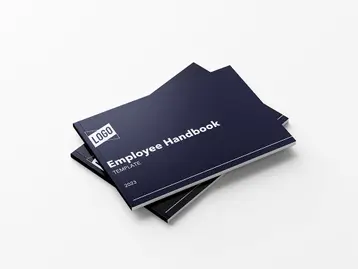
No one wants to think that their work may allow racist behaviors. But ignoring potential problems can turn catastrophic later on. And more employees than ever are saying that they want their employers to contribute to changing the world for the better. In fact, in a Metlife study, 70% of employees said companies should take a stand on societal issues. Racism is a prominent issue, and many companies, including Airbnb and Microsoft, have openly committed themselves to support anti-racist groups such as Black Lives Matter. The good news is that you can take steps to eliminate racism in the workplace — but only if you can identify it.
What is racism in the workplace?
Racism in the workplace can be challenging to diagnose. While it’s tempting to see racism as overt and direct discrimination, it is more often subtle and even systemic. In fact, the main difference between discrimination and racism is that the process is often system. Examples of non-overt racism are substantial pay gaps, ignoring racial basis in hiring, and reserving only certain high-level positions for minorities (such as diversity officer). Microaggressions, the subtle everyday incidents of racism, can also prove to be a problem. If your workers regularly feel left out, excluded, or bullied due to colleague actions or policies, they are likely to leave in the long term. And even if they opt to stay due to your salary or benefits packages, they are less likely to be productive, and the overall workplace can quickly become toxic due to distrust among your employees. The problem is that racism, when it’s subtle, can sometimes be difficult to discover and verify. But it’s far from impossible. In addition to listening to your employees about racism in the workplace, 3 huge clues can help you understand if there’s a problem.
3 clues that your workplace might be fostering racism
The fact is, it can be hard to know whether your workplace is facilitating racism — especially if you’ve never experienced it first-hand. As we just mentioned, microaggressions are probably the most common form of racism in the workplace, and if you don’t know what to look for, you may miss these signs. To start, it can help to diagnose overarching issues and dig deeper. If you can identify any of these 3 behaviors in your workplace, systemic racism may be at work:
1. Stereotyping
First, stereotyping is a huge issue, although it’s often dismissed. Stereotyping in the office occurs when someone has incomplete or incorrect information about a person or their race and can often underhandedly ridicule employees. While the intention is not always malicious, stereotypes are often offensive and can create a “they” and “us” mentality in the workplace.
2. Overlooking top talent
Do you have motivated employees who don’t seem to be getting promotions or praise nearly as much as their peers? Racism may be the root of the problem. In a recent survey, only 34% of Hispanic and 19% of Black respondents believed that upper management understood ethnic or racial differences. To make matters worse, only 21% of Hispanic and 10% of Black workers felt that they were represented in upper management. Overlooking top talent due to racial bias may be unintentional, but it’s often systemic. When reviewing candidates for a promotion, it can help to ask yourself why specific individuals aren’t being considered. If criteria such as responsibilities, education, and upskilling are an issue, it might be worth making sure all of your employees have access to the tools they need for success.
In a recent survey, only 34% of Hispanic and 19% of Black respondents believed that upper management understood ethnic or racial differences.
3. High diversity turnover
Probably the most clear-cut sign that racism might be an issue at your organization is if you have a high diversity turnover rate. If minority workers leave left and right, you likely have significant cultural issues that make the work environment hostile. It’s essential to conduct exit interviews and reassess your setup. Try to tune into conversions and find ways to handle racism through both policy and interventions.
How to create an inclusive workplace
While it’s hard to affect individuals on the ground level, policy alone isn’t enough. The good news is that employees often look to upper management to set an example. To create a more inclusive workplace, you may want to restructure your resources and communication channels to ensure that all voices are heard. You’ll also want to deal with incidents of racism swiftly and openly. Make sure that your employees know that respecting one another is paramount. You may want to bring on your staff members from minority groups to help restructure policies across hiring, promotions, and operations to ensure that everyone is heard and fundamental organizational change happens.
Learn more about creating an inclusive workplace
While creating an inclusive workplace is something every company can strive towards, starting the process can feel overwhelming. Racism can feel difficult to discuss, and it’s common to be uncertain about where to begin. That’s why we created a free guide to help you conceptualize the issues around racism in the workplace and how to better support your employees. Download our HR Guide to Addressing Social Issues and Racism today.
This communication is for informational purposes only; it is not legal, tax or accounting advice; and is not an offer to sell, buy or procure insurance.
This post may contain hyperlinks to websites operated by parties other than TriNet. Such hyperlinks are provided for reference only. TriNet does not control such web sites and is not responsible for their content. Inclusion of such hyperlinks on TriNet.com does not necessarily imply any endorsement of the material on such websites or association with their operators.






